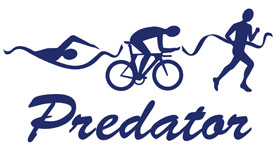6-week Duathlon training plan
The purpose of this plan is to prepare diligently for the Predator St. Patrick’s Duathlon. No matter what your fitness level is or how much you have been training you will be able to complete this program and finish the race with confidence.
This plan will get you to the finish line feeling strong and having fun. Remember, a training plan is only a guideline. You will need to use your judgment in terms of adjusting workouts and doing more/less. Intensity level will play a large role in how well you do race day and be the difference in completing this program as a beginner or a veteran.
Prior preparation
Any program can be completed by most people no matter what your fitness level is including this one. The difference will be the intensity at which you complete each workout and the time it takes for you to complete it. While following a program consistently is important, always remember to listen to your body. Some workouts will be hard and you will be tired, that is to be expected. But if your body is sore and fatigued prior to starting a workout, then modifications need to be made and extra rest days included.
While this may look like a lot of training, remember that most of the workouts are an hour or less. There are a few sessions where you will be over the hour time, and this will depend a bit on your starting fitness level and the intensity at which you work at, but most workouts will be completed within the hour.
Intensity
Different days will require different training intensity levels. Included in the 6-week program is a guide on a scale of 1-10 what level you should be working at for each specific workout. This is a guide. You will have good days and bad days so just listen to your body and work as close to that guide as possible. If you are just not feeling it one day and it will be an accomplishment just to get through the workout, then lower your intensity level and put in the kilometres or time but at a nice easy pace.
Motivation
This plan is intended to be challenging but realistic for an athletic individual. Athlete challenge is to complete as many workouts as possible and at the appropriate intensity level. Do not punish yourself if you miss a couple days; just get back on the program as soon as possible. And remember you only have one body so listen to it and treat it well. For some, these workouts will be a lot more than what you’re currently doing, so if your body is feeling tired and sore take an extra rest day or switch the workout to a nice short easy ride on the bike and lots of stretching.
Extra training/range of training
The workouts in this plan fit a framework of 5-8 hours per week. You can add extra kilometres to the distances specified especially if you are training for other endurance sports. The distances in this program are specific to complete the 5 kilometre run, 20 kilometre bike, and 4.5 kilometre run. Just remember you only have one body so listen to it and treat it well. Rest and recovery are just as important as getting in the kilometres.
Do NOT add extra training on the rest days. Do the stretching and let your body recover. To add extra training, do two-a-days (2 workouts on the same day) on regular workouts days, or make your weekend sessions longer.
Substitution of workouts
If changing the workouts in this plan is required, there is no problem to switch days. Life circumstance, weather, facilities, etc. may dictate what you can do and when. Just remember that this plan includes regular rest and recovery. Do not short-change your rest days or you may become overly fatigued.
Cycling
A portion of the cycling workouts may be completed on stationary trainers or spin bikes. However, you should be comfortable on the bicycle you’ll be using for the race. During the last few weeks it is especially important that you can shift, steer, and brake proficiently. The most important component to generate power on the bike is to keep a high cadence. Invest in a cyclocomputer with cadence function, and keep your rpms in the 90-105 range. Aerobars and clipless pedals will give you lots of extra speed for good value.
Running
Practice bike to run sessions during training so that you will know what to expect from your legs during the race. When you get off the bike, focus on increasing your cadence. Your legs will loosen up and stretch out after 5-10 minutes. New runners or athletes carrying extra weight, it is recommended you complete the Fun Run technique, alternating between jogging and walking, as a strategy to build endurance. If you are an experienced runner, do some fast running off the bike to get ready for “transition legs”.
Disclaimer
Consult with a physician before beginning this or any exercise program. If you experience any persistent joint or muscle pain, consult with a physician or sports medicine professional. If it feels hard, you are doing something right. It is making you stronger. Use good judgment in your exercise program.
- Inside the brackets indicates the intensity level on a scale of 1-10. 1= sitting on a couch; 5=light to moderate; 8=moderate to hard; 10= max
- WF= working flat. Find a resistance compared to riding outside on a flat road. You can still feel the bike under you and your legs are moving between 90-100rpm
- Intervals on the bike: high intensity during the interval with rest between each one on a flat road. Intervals should be between 15 seconds to 2 minutes.
- Rest between 15 seconds to 2 minutes as well. Work hard during the interval at the indicated intensity level and then try and recover as quickly as possible.




